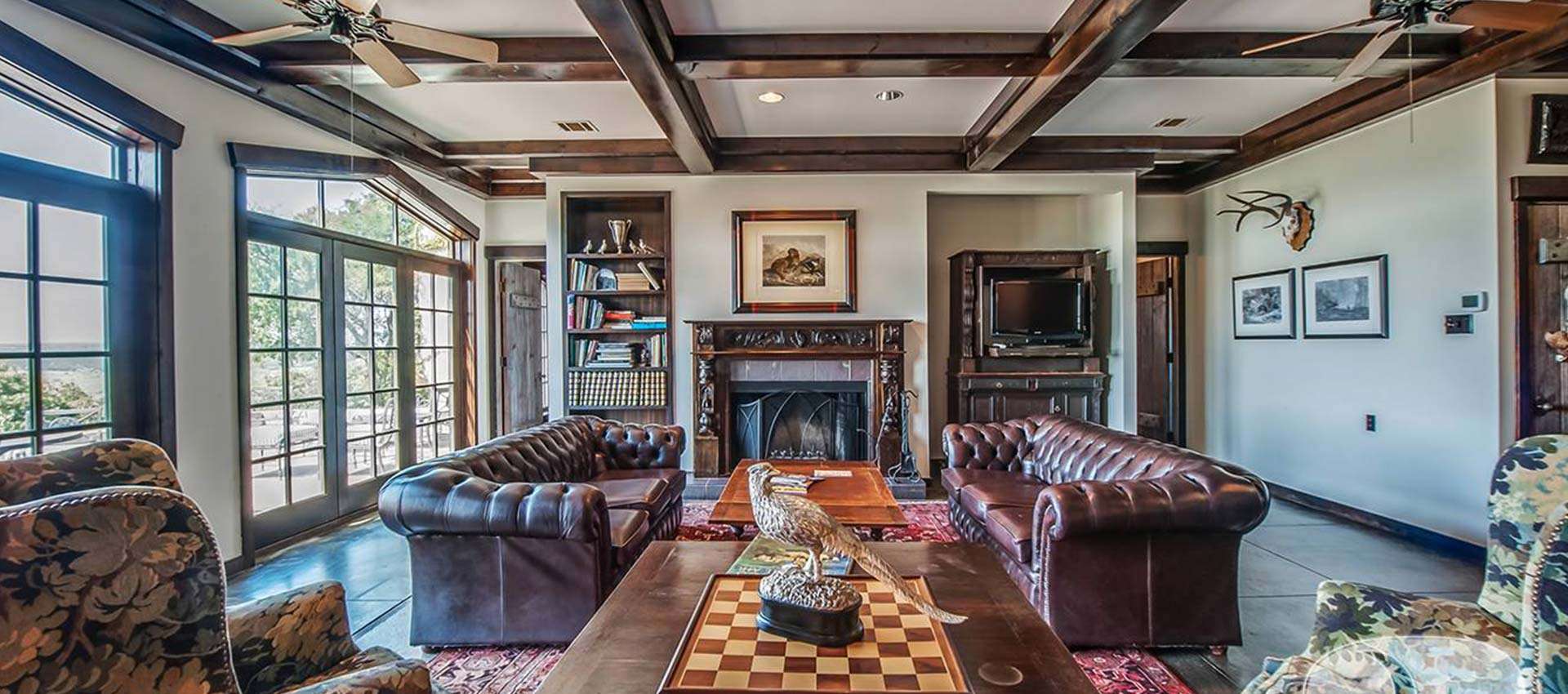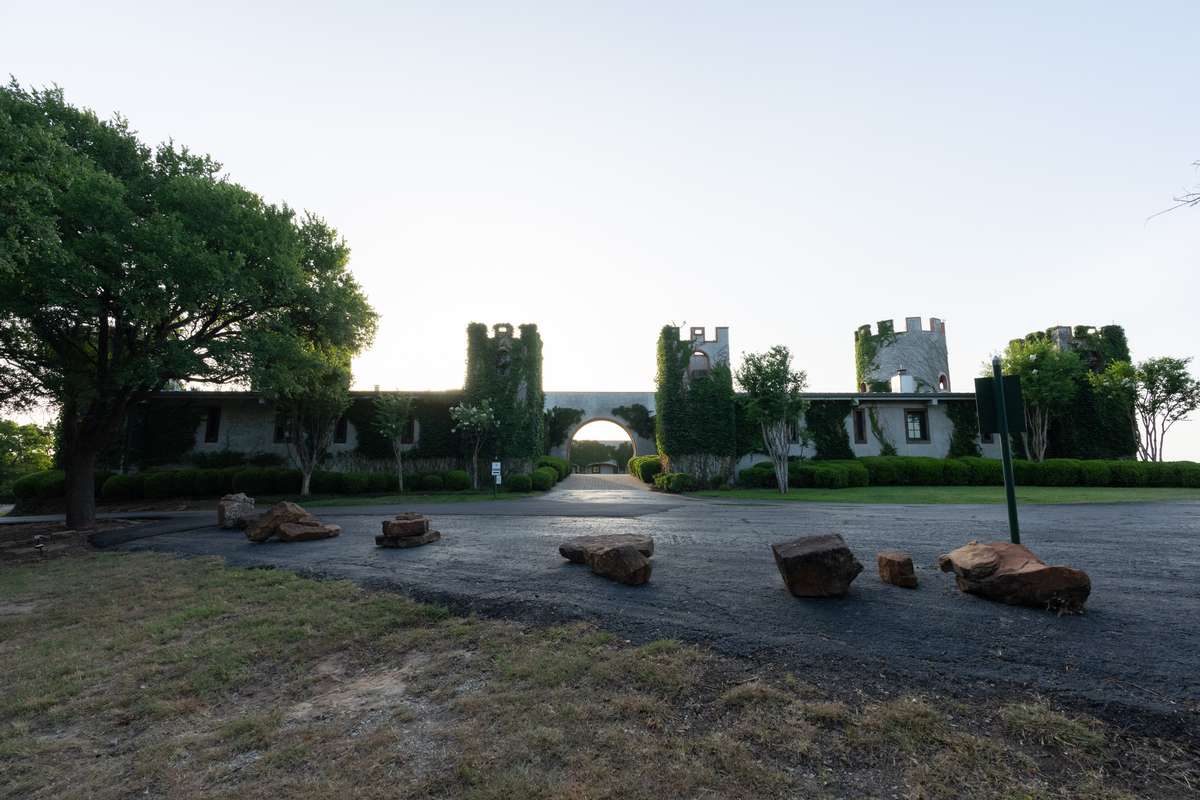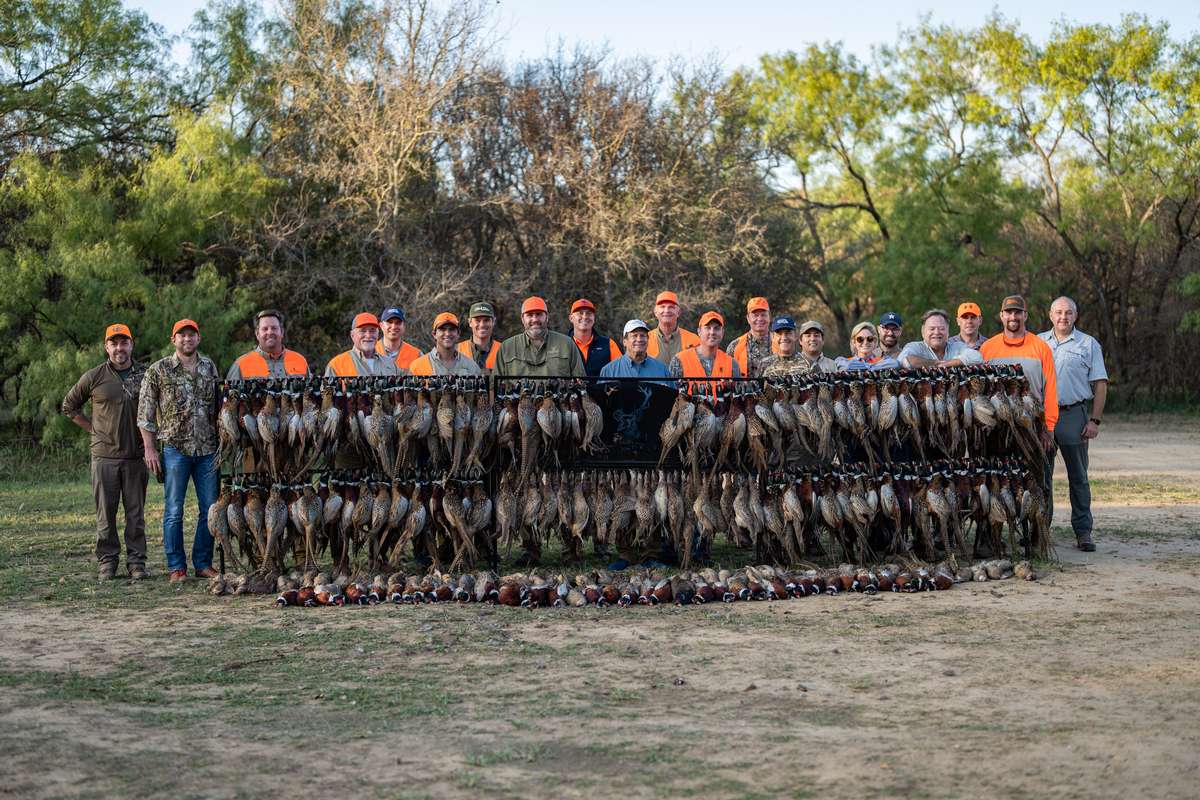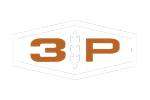
Tear

Castle History
The Greystone Castle's history originated from the dream of a Texas businessman. He was looking to build a castle as the centerpiece for the ultimate outdoor sporting facility. He searched for years to find the ideal land with unparalleled natural beauty. He started construction on the building in the 1980s, adding 13 lakes, 30 miles of roads, and a 60-run dog kennel. After finishing the three walls and 4 turrets, he sold the beginnings of the castle and its 4,000 acres to several investors. These investors added Lodge 1 and 2, the dining room, and an open-air pavilion as the south structure.
By the late 1990s, Greystone Castle Sporting Club had added to its acreage and was operating as a commercial hunting ranch. In 2000, Greystone Castle became an Orvis Endorsed Wingshooting Lodge. In addition to Wingshooting, Exotics Hunting and Whitetail Deer Hunting were added to the list of hunting activities. As it became obvious that many upgrades and expansions were needed, 2 of the original investor groups decided to sell out.
Castle Hunting Lodges
In the mid-2000s, the current owners of Greystone Castle came together and formulated a partnership to turn Greystone Castle Sporting Club into a worldwide premier destination. Upgrades began immediately – including the addition of the conference room, Owner’s Lodge, and Hunting Lodges 3, 4, and 5. The dining room was upgraded, and the castle walls were improved. The dusty gravel driveway up to the castle was paved and a giant lake project was initiated to create a Trophy Bass Fishing haven.
In 2011, Greystone Castle was awarded its first Orvis Wingshooting Lodge of the Year award. Plans were finalized and ground broken to build a brand new 2600 square foot pavilion. This was finished in the Spring of 2014, and Greystone was a finalist for Orvis Lodge of the Year. 2015 brought another Orvis Wingshooting Lodge of the Year award.
The next major projects were to build a new wobble deck/5-stand and pool facility. The Wobble Deck opened in January of 2015 and the 5-stand opened in October. Heavy rain throughout the Spring of 2015 filled up the redesigned lake and bass were stocked. New roads throughout the hunt field were put in. The pool, hot tub, and steam room were completed in November 2015. The next project was to upgrade the Sporting Clays program. The old course was removed, and two new courses were designed and built by William Walton, the 2015 National Sporting Clays Champion. In 2016, Greystone Castle began hosting National Sporting Clays Association registered sporting clays tournaments.

Greystone Castle Today
The ownership of Greystone Castle today is now proud to manage 6,000 acres of prime wildlife habitat. While the Wingshooting program continues to be world-class, the Whitetail Deer Hunting and Exotic Hunting programs are seeing the results of the extensive long-term investment. Over 100 acres of lakes are now managed for trophy fishing, and 6-10 NSCA Sporting Clays tournaments are hosted yearly, along with numerous charity and fun shoots. Continual improvement of the facilities, grounds, and available activities make Greystone Castle a perfect place for individual, family, charity, and corporate events. As the exceptional service and guest experiences continue, Greystone Castle is now widely recognized as one of the premier luxury hunting lodges in America, as shown with the most recent Orvis Wingshooting Lodge of the Year award in 2022. Although this is something that we are proud of, we plan to continue seeking out ways to improve our facility and enhance the experience for future guests.
History of Thurber, Texas
The History of Thurber, Texas began with its founding in 1888 by the Texas and Pacific Coal Company. At one time, it was the 3rd largest town in Texas. Coal, oil, and brick were the most important factors in Thurber’s growth. The coal fueled the railways which opened up the Southwest. The oil discovery helped the American troops through WWI. Oil production made the area so wealthy that by the 1900s, every house was equipped with running water and electricity. The brick, made of the high-quality shale found in the local hills, was used to pave highways, streets, and even build seawalls. Famous streets paved in Thurber brick include Congress Avenue in Austin, the Bankhead Highway, and Main Street in Fort Worth, as well as the Fort Worth Stockyard.
Industry in Thurber
Thurber was known as a melting pot for immigrants. Over 18 ethnic groups worked as coal miners and brickmakers. These workers were subjected to very difficult working conditions and poor pay. The area became the only totally unionized town in the world after the coal miners’ strike in 1903. This vastly improved the quality of life and led to a strong start to the 20th century. By the 1930s, Thurber History changed as railroads switched away from coal use, and the miners were forced to move on to new occupations. The brick factory was shut down and the oil wells were turned off. This left the once booming town a virtual ghost town.
